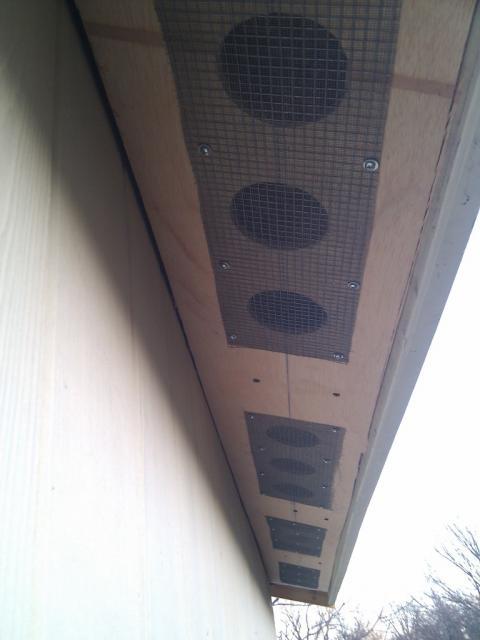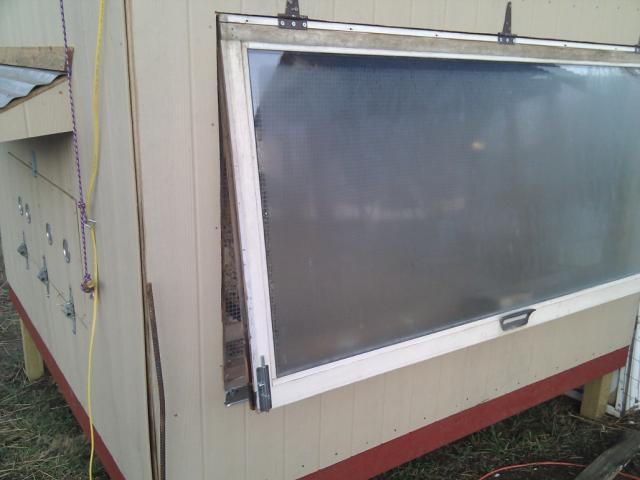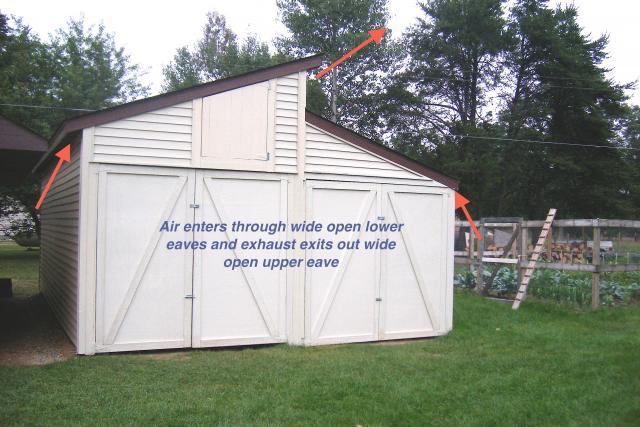I thought I had my coop all figured out, but after reading the following thread, I am more confused about ventilation as ever. Or at least with respect to my coop design.
https://www.backyardchickens.com/forum/viewtopic.php?id=445004&p=1
For ventilation in my coop I have vents under the eave, a big glass window I can open, and a ridge vent for everything to escape. After looking at the following pictures, can you help me answer these two questions?
1) How can I tell if humidity is building up in my coop? This morning my coop was 20 degrees warmer than outside and humidity was at 70% (we had a lot of rain the last day or two)
2) How do I know when to open my big picture window? I don't want to much breeze and with the 4" soffit vents between each rafter and the ridge vent, do I need to open the picture window during the winter? Before I put the soffit in, there was enough draft to blow out a candle even with everything else closed.
My coop is about half done, but far enough along I can't make any major changes.
Picture of soffit

Picture of glass window (actually a re-purposed sliding glass door)

Sorry if this topic has been re-visited time and time again.
Thanks
https://www.backyardchickens.com/forum/viewtopic.php?id=445004&p=1
For ventilation in my coop I have vents under the eave, a big glass window I can open, and a ridge vent for everything to escape. After looking at the following pictures, can you help me answer these two questions?
1) How can I tell if humidity is building up in my coop? This morning my coop was 20 degrees warmer than outside and humidity was at 70% (we had a lot of rain the last day or two)
2) How do I know when to open my big picture window? I don't want to much breeze and with the 4" soffit vents between each rafter and the ridge vent, do I need to open the picture window during the winter? Before I put the soffit in, there was enough draft to blow out a candle even with everything else closed.
My coop is about half done, but far enough along I can't make any major changes.
Picture of soffit

Picture of glass window (actually a re-purposed sliding glass door)

Sorry if this topic has been re-visited time and time again.
Thanks







